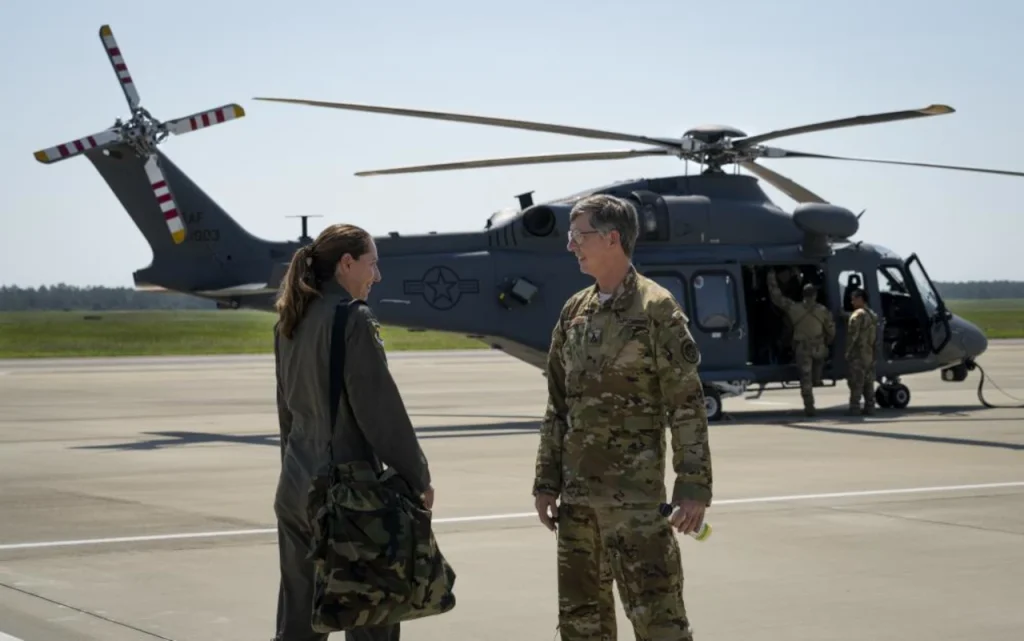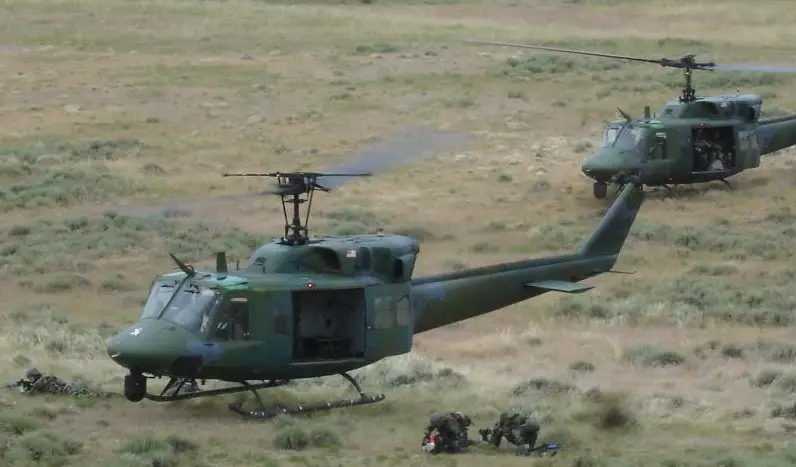On August 17, the Boeing MH-139 Grey Wolf took to the skies for the first time with an all-US Air Force crew. The Grey Wolf reached this milestone after receiving its military flight permit on August 12. As the programme progresses, the new status allows Air Force-only aircrew to conduct testing on the MH-139A’s military capabilities. Since the aircraft’s arrival in December 2019, military and Boeing contractors participated in the flight duties before the military flight release.
Lt. Col. Mary Clark, a former requirements officer with the Grey Wolf program, now at the 96th Operations Group, piloted the helicopter during the first all-Air Force flight.
During that two-and-a-half-year period, military testing was handled by the 413th Flight Test Squadron and AFGSC Detachment 7, both of which Clark had previously served as commander. The 413th FLTS is the only rotary-wing developmental test unit in the Air Force.
According to Clark, the milestone marks the start of Air Force testing for the Grey Wolf. The crew can now open up test points for the military and push the envelope even further to ensure that the helicopter delivers the operational capability that the units require.

The helicopter took its first flight under its new call sign, Lycan, which means “werewolf,” above and around Duke Field, an auxiliary field north of Eglin. That flight was intended to validate processes, checklists, maintenance, emergency procedures, and aircrew communication and coordination.
Tech. Sgt. Alexander Graves, an AFGSC Det. 7 special missions aviator (a former C-130 loadmaster) took part in both the initial MH-139 flights with Boeing in early 2020 and the all-Air Force flight. The Airman stated that he had not considered his place in Grey Wolf history as the first enlisted to fly in and instruct on one of the Air Force’s newest aircraft.
Next steps in testing
The goal of the next 15 months of testing on the four MH-139As here will be to validate the aircraft’s safety and define the aircraft’s limits and manoeuvrability. The developmental testing will ensure that the MH-139A meets AFGSC operational mission requirements and will define baseline operational capabilities to build tactics, techniques, and procedures.
MH-139A deployment
The MH-139A will replace the Air Force’s UH-1N Hueys, increasing speed, range, endurance, payload, and survivability. The Air Force will purchase up to 80 helicopters, training devices, and associated support equipment. Four major commands and other operating agencies will benefit from the aircraft’s vertical airlift and support.
The MH-139A will be delivered to Malmstrom AFB in Montana, Minot AFB in North Dakota, F.E. Warren AFB in Wyoming, and Joint Base Andrews in Maryland. Malmstrom will be the first to receive the helicopter. The MH-139A will have its formal training unit at Maxwell AFB in Alabama.
Twenty five helicopters will replace the base’s 21 ageing UH-1N Hueys at Joint Base Andrews. The additional four aircraft will allow the base to continue government operations and distinguished visitor transport missions without the need for additional support units. The number of people needed to support this mission will increase from 235 to around 310.
Before making a final decision, the Department of the Air Force (DAF) expects to complete the required environmental assessment in summer 2023.
Boeing MH-139A Grey Wolf
The MH-139 is a Boeing-modified version of Leonardo’s successful Italian-designed AW139 series of medium-lift helicopters.
The MH-139A Grey Wolf multi-mission helicopter is designed to protect intercontinental ballistic missiles as well as transport US government officials and security forces.
Boeing’s MH-139A cruises 50% faster, travel 50% farther, has a 30% larger cabin, and can lift 5,000 pounds more than the legacy platform, all while adding full autopilot capability to reduce pilot workload. It has a cutting-edge avionics system with advanced flight deck functionality and enhanced situational awareness, resulting in less crew workload.

The programme encountered some difficulties. The USAF cancelled its purchase of the Grey Wolf in 2022 because fielding was delayed due to FAA certification issues. The FAA stated at the time that the MH-139A required an updated certification because it is a commercial derivative aircraft with unique military equipment that requires certification, resulting in a significant delay.
UH-1N Huey
In 1970, the UH-1N was added to the USAF inventory to provide search and rescue capabilities. In addition to the general duties, missile security, distinguished visitors, survival school, and test support were added to its mission. Due to the increased safety and capability of the twin-engine, the HH-1H and UH-1F supporting missile wings were eventually replaced by the UH-1N.
The UH-1N is the military adaptation of the Bell 212, one of the many variants of the “Huey”, first designed and flown in 1956. Bell Helicopter/Textron Inc manufactures it.
